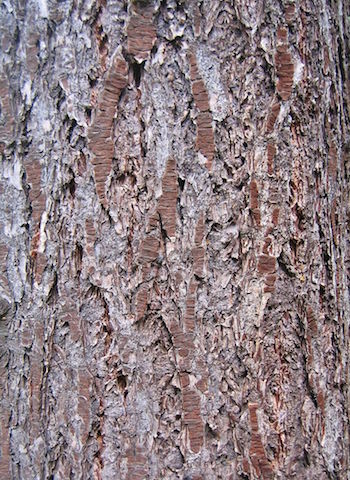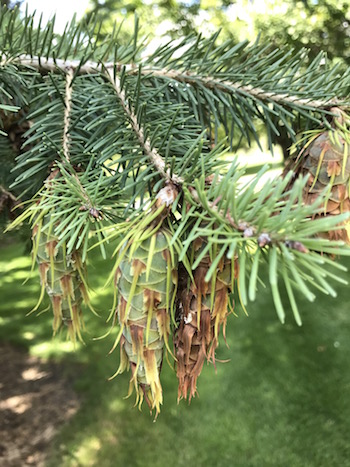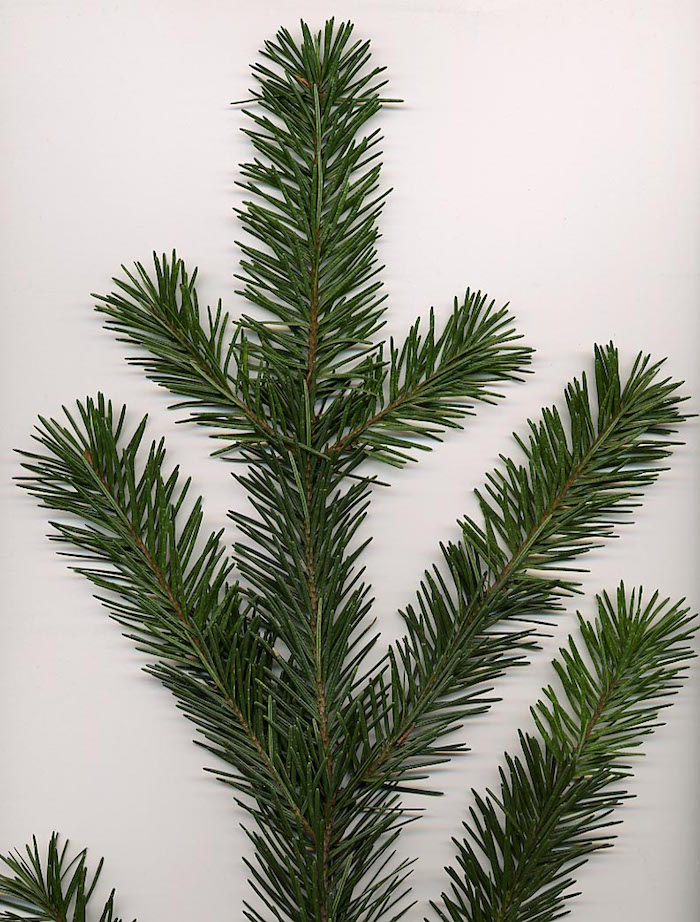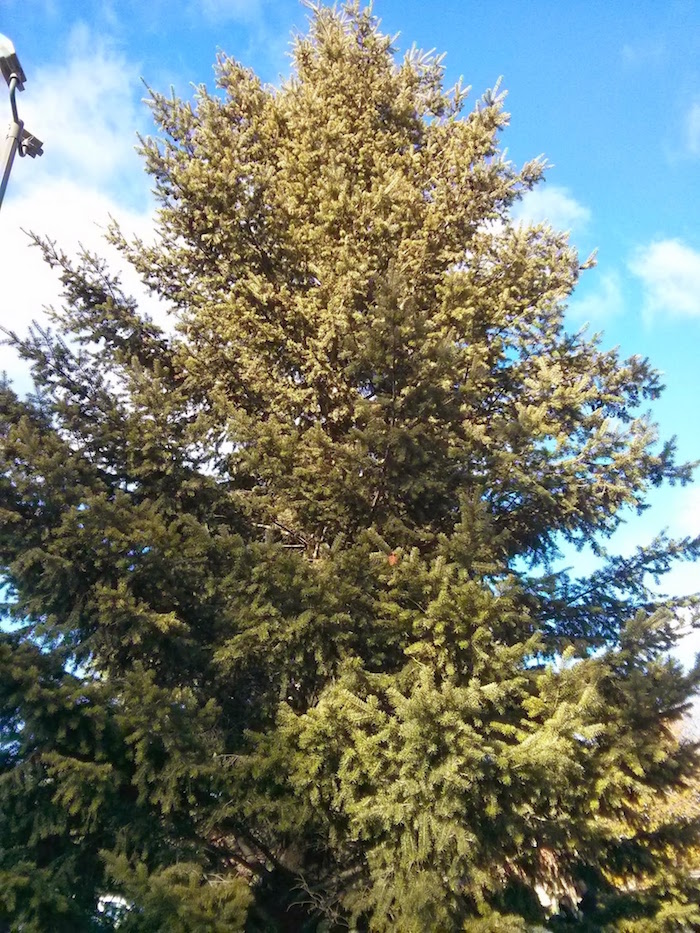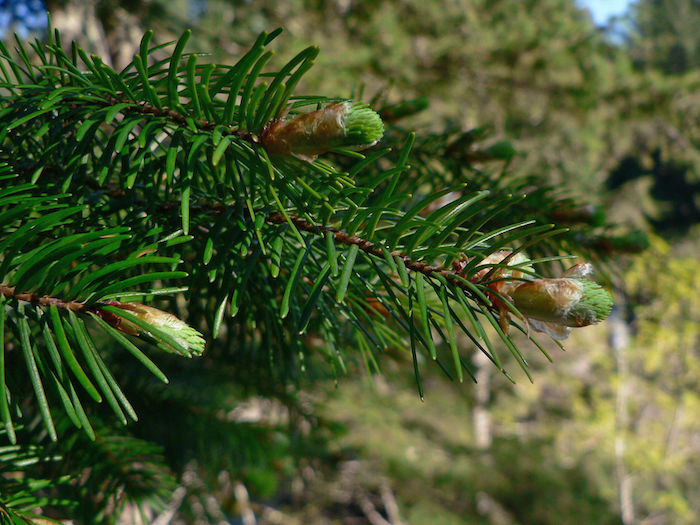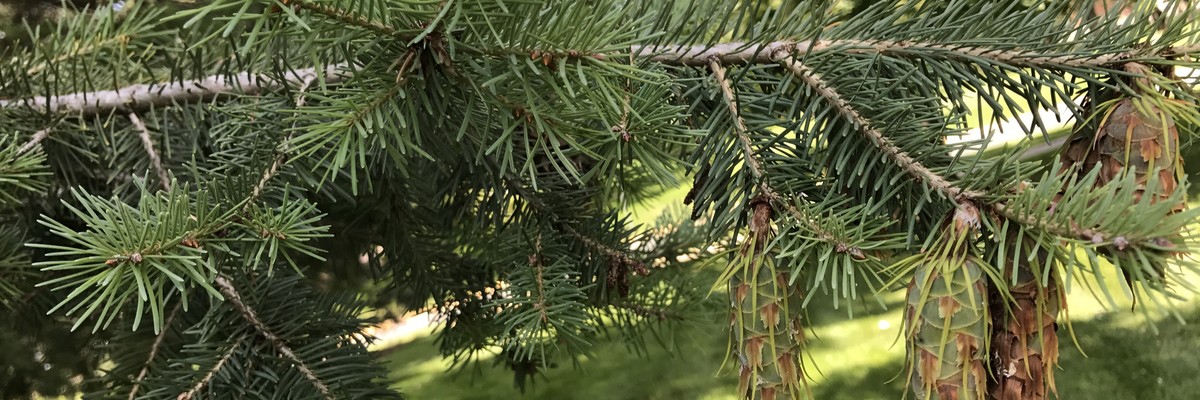
Description:
Douglas Fir trees are large, imposing conifers native to the Pacific Northwest, and can be some of the largest trees in the world. In their native range, they can grow to be more than 200 feet tall. Needles are flat, dark green, and arranged spirally around stems, and the bark is deeply grooved and grey to reddish brown. Douglas Fir cones can be up to 4 inches long and have bracts that stick out beyond the cones’ scales, resembling mouse tails.
Photo Credit: Public Domain CC by SA 3.0
The tree is one of the most important species for logging around the world and has been naturalized in Europe, South America, and Australia. The University of Minnesota Cloquet Forest Research Center started planting Douglas Fir trees in the 1950s to study their potential as Christmas trees in Minnesota and most Douglas Firs now grown in the state are on Christmas tree farms. The limited hardiness of the native Douglas Fir and smaller size of the glauca variety make it a poor logging species for Minnesota, but a lovely addition to the landscape.
Issues:
Douglas Firs are fairly resilient and are not attacked by many pests, but root rot can be a problem in areas with poor drainage.
Other Resources:
Photo Credit: Walter Siegmund CC by 2.5
